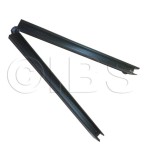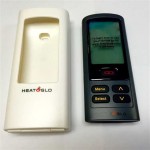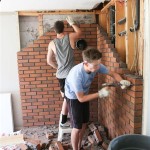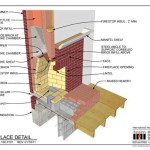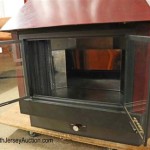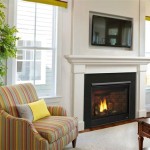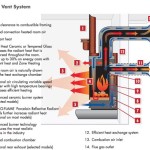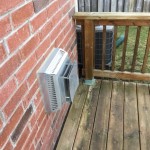In-Wall Vented Gas Fireplaces: A Comprehensive Overview
In-wall vented gas fireplaces offer a compelling blend of aesthetics and functionality for homeowners seeking a modern and efficient heating solution. Unlike their ventless counterparts, vented gas fireplaces require a chimney or venting system to safely exhaust combustion byproducts outside the living space. This crucial difference dictates their installation requirements, performance characteristics, and overall safety profile. This article delves into the key aspects of in-wall vented gas fireplaces, providing a detailed understanding of their operation, benefits, considerations, and installation requirements.
An in-wall design refers to the fireplace being recessed into the wall, creating a flush or near-flush appearance. This integration offers space-saving benefits and a clean, contemporary look that seamlessly integrates with various architectural styles. The “vented” aspect signifies that the fireplace requires a dedicated venting system to expel carbon monoxide, water vapor, and other combustion gases from the interior environment. The venting system can be either a traditional chimney or a direct vent system, depending on the fireplace model and the home's construction.
Key Point 1: Safety and Venting Requirements
The primary advantage of a vented gas fireplace lies in its enhanced safety compared to ventless models. The presence of a venting system ensures that harmful combustion byproducts are effectively removed from the home. Carbon monoxide, an odorless and colorless gas, is a significant concern with unvented appliances. With a properly installed and maintained vented gas fireplace, the risk of carbon monoxide poisoning is significantly reduced. The venting system also helps to mitigate the buildup of moisture inside the home, which can lead to mold growth and other indoor air quality issues.
There are two main types of venting systems commonly used with in-wall gas fireplaces: traditional chimneys and direct vent systems. A traditional chimney relies on natural draft to exhaust the gases, requiring a continuous vertical pathway to the outside. Direct vent systems, on the other hand, use a coaxial pipe system. One pipe draws fresh air from outside for combustion, while the other expels the exhaust gases. This design allows for more flexible installation options, as the vent can be run horizontally through a wall to the exterior, rather than requiring a vertical chimney. Direct vent systems are typically more energy-efficient than traditional chimney systems because they minimize heat loss through the venting process.
Proper installation of the venting system is paramount for the safe and efficient operation of an in-wall vented gas fireplace. It is crucial to adhere to the manufacturer's instructions and local building codes during the installation process. A qualified HVAC professional or fireplace installer should be consulted to ensure that the venting system is correctly sized, sealed, and connected to the fireplace unit. Regular inspections of the venting system are also recommended to identify and address any potential issues, such as blockages or leaks.
Key Point 2: Aesthetics and Design Flexibility
In-wall vented gas fireplaces provide considerable aesthetic versatility, allowing homeowners to customize the fireplace to complement their interior design. The recessed design creates a clean and modern look, making it a focal point of the room without taking up excessive floor space. The surrounding wall can be finished with various materials, such as tile, stone, or drywall, to seamlessly integrate the fireplace into the overall décor.
Many in-wall vented gas fireplaces offer a range of decorative options, including different flame patterns, log sets, and interior liners. Flame patterns can be adjusted to create a realistic and visually appealing fire experience. Log sets, often crafted from ceramic or refractory materials, mimic the appearance of natural wood and add to the authenticity of the fireplace. Interior liners, available in various colors and textures, can enhance the visual appeal of the firebox and complement the surrounding décor. Some models also feature integrated lighting systems that further enhance the ambiance of the room.
The in-wall design also allows for creative integration of other features, such as built-in shelving or media storage. This can create a cohesive and functional entertainment center around the fireplace. The flexibility in design makes in-wall vented gas fireplaces a popular choice for both new construction and remodeling projects. Homeowners can create a unique and personalized fireplace that reflects their individual style and enhances the value of their home.
Key Point 3: Operational Considerations and Performance
In-wall vented gas fireplaces offer convenient and efficient heating solutions. They typically feature remote controls or wall-mounted thermostats that allow for easy temperature adjustments. The heating output of the fireplace is measured in British Thermal Units (BTUs). Selecting a fireplace with an appropriate BTU rating for the room size is crucial for optimal comfort and energy efficiency. An oversized fireplace can lead to overheating, while an undersized fireplace may not provide sufficient warmth.
While vented gas fireplaces are generally more efficient than traditional wood-burning fireplaces, they are not as energy-efficient as ventless models. The venting process inevitably results in some heat loss to the outside. However, many modern vented gas fireplaces incorporate features such as sealed combustion chambers and electronic ignition systems to maximize energy efficiency. These features minimize air leakage and reduce the amount of gas required to start and maintain the fire.
Regular maintenance is essential for ensuring the safe and efficient operation of an in-wall vented gas fireplace. This includes cleaning the glass door, inspecting the venting system, and checking for any gas leaks. A professional fireplace technician should be consulted annually to perform a thorough inspection and cleaning of the fireplace and venting system. This will help to identify and address any potential issues before they become major problems.
The selection of an in-wall vented gas fireplace involves considering factors beyond aesthetics. The size of the space to be heated, the venting options available, and the overall energy efficiency are all important considerations. Consulting with a qualified professional can help homeowners make an informed decision and choose a fireplace that meets their specific needs and preferences.

How To Find The Most Efficient Direct Vent Gas Fireplace For Your Next Project

Benefits Of Direct Vent Fireplaces

Guide To Direct Vent Gas Fireplaces
Understanding How Direct Vent Works Heat Glo

Fire Ribbon Direct Vent Slim Gas Fireplace Spark Modern Fires
Gas Fireplace Venting Explained Heat Glo

Freestanding High Efficiency Direct Vent Gas Fireplaces Inserts Stoves Godby Hearth And Home

Napoleon Gas Direct Vent Wall Mount Fireplace Whd31 Fireplaces Hvacdirect Com

One6 Vf SÓlas Contemporary Fireplaces

What Are The Best Ways To Vent A Gas Fireplace Zoroast
Related Posts

